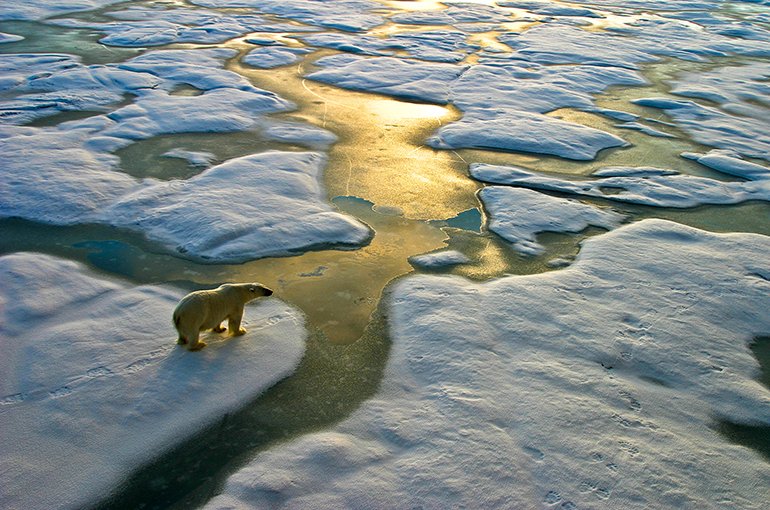Biodiversity is crucial to cope with climate change
Nature conservation

This week, the biodiversity conference takes place in Montreal, after it was postponed by Covid-19 in the Chinese city of Kunming last May. That postponement was worrying, says Professor of Land Use and Biodiversity Merel Soons, because time is running out for nature conservation.
The reason our biodiversity is declining so much is well known. The biggest threat to wild plants and animals is the loss of their habitats. Where there is no longer a place to shelter, eat, raise young or simply grow, plants and animals cannot survive.
Secondly, comes 'overutilisation': the unsustainable hunting, fishing, gathering and harvesting of wildlife. In shared third and fourth place come pollution and climate change. For instance, pollution with excessive nitrogen is a major problem in many countries with intensive agriculture. Climate change plays a major role worldwide.
The polar bear has become an icon of the consequences of global warming: its habitat is disappearing with the ice. Additionally, changing precipitation patterns, with more extreme weather such as heavy downpours and drier summers, also threatens the survival of many species.
Grasslands
We are in desperate need of biodiversity precisely to cope with climate change. Grasslands that have a higher diversity of grasses and herbs are more stable in providing ecosystem services under highly variable weather conditions. In particular, plant biomass production, or the amount of forage available for grazers such as livestock, is more stable when the number of plant species in the vegetation increases.
As early as 2015, for instance, a review study in ‘Nature’ showed that grasslands with higher diversity are much more resilient to climate extremes such as intense summer drought. This, in turn, makes our food production more resilient to extreme weather. The same impact of plant diversity on stability is also found in forests. Forests not only provide food and wood, but also sequester carbon and regulate the climate.
High species diversity is also important. To survive climate change, many plant and animal species will have to move from the current region in which they live to other regions, which are cooler and/or more humid. Animals can often move on their own. But plants, including those that stabilise our ecosystems and make us more resilient to climate change, disperse only once in their lifetime, as seeds and about half of the seeds of all plant species are dispersed by animals.
A recent study in ‘Science’ shows how plants depend on different animal species for dispersal. If a species dies out locally due to hunting, for example, some plant species can no longer disperse. Those species thus lose the ability to follow climate change. The study calculates that the current loss of animal species has already led to a 60 per cent reduction in the capacity of plants to keep up with climate change. Future loss of endangered species will lead to a further 15 per cent reduction. Conservation of current wildlife populations as well as recovery of lost animal populations is therefore essential to keeping our ecosystems resilient to climate change.
Islets of green
In one study, my colleagues and I show that protecting nature reserves fortunately makes sense, particularly, in fragmented landscapes, where nature occurs as islets of green between agriculture, infrastructure and built-up areas, therefore, strictly protecting the remaining nature is a necessary endeavour. Thereby, not surprisingly, the larger the nature fragments are, the more that species can survive in them. More special species can also survive in strictly protected, large fragments, such as endangered species and seed-dispersing birds. In particular, birds that can disperse seeds over longer distances benefit from larger nature fragments.
It is therefore crucial that effective agreements are made worldwide to preserve and restore our biodiversity. But agreements alone will not get us there. There must be follow through: protect natural areas and work to restore plant and animal populations, not only in nature but also in agricultural and forestry systems. These are no-regret measures. We cannot afford to wait for the next biodiversity freeze. Neither can the climate.
This blog was published on 5 May 2022 on the climate blog of the NRC. Scientists from Utrecht University are reporting in the NRC on their research in the field of sustainability. They are united around the strategic theme of 'Pathways to Sustainability'.

